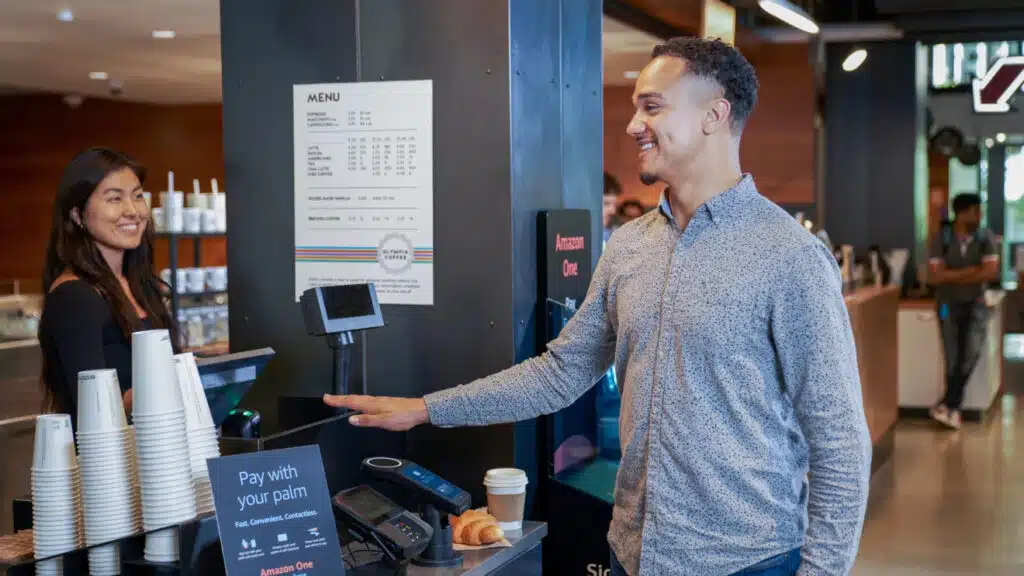The planned expansion of Amazon.com Inc.’s palm-reading point-of-sale technology to all of the company’s 515 U.S. Whole Foods stores, a move the online retailer announced late last week, could represent a major leap for an authentication method few if any other backers have tried.
The technology, introduced three years ago and called Amazon One, is now in use at more than 400 locations, including Whole Foods stores, Panera Bread restaurants, and some stadiums. It has been installed in more than 200 Whole Foods locations so far.
The Amazon One device allows users to forgo cards or tokens to pay at checkout. The technology enables customers to authenticate themselves and link to a card by waving the palm of their hand over the device.

The chainwide expansion to all U.S. Whole Foods locations, which is expected to be complete by the end of the year, will more than double the number of those locations using the technology.
“In a very real sense, Amazon is building an interoperable transaction-acceptance platform that doesn’t require anything but the customer’s palm once the account has been established. It’s a big idea, and with Amazon’s penetration of the U.S. consumer base, critical mass will quickly be achieved,” notes Thad Peterson, a strategic advisor at the consultancy Datos Insights, in an email message.
To open an Amazon One account, a consumer inserts a credit card into an Amazon One terminal, then waves her palm over the terminal so it can be scanned and linked to the card. Amazon One uses computer-vision technology and selects the most distinct identifiers to create a palm signature, Amazon says. Consumers can register one or both palm prints.
Observers point out that the Amazon technology is now well past the trial stage and ready for chainwide adoption. “Amazon One is now a proven technology that effectively eliminates the need for a physical card or digital wallet to enable payment,” says Peterson. “The combination of the security of a biometric along with the convenience and speed that the technology offers makes it a logical addition to [the point of sale] for Amazon’s captive retail outlets like Whole Foods.”
At Panera, which adopted the technology in March, customers who link their MyPanera loyalty account to their Amazon One ID can place an order, receive personalized meal recommendations from Panera associates based on their preferences and previous orders, and reorder their favorite items. Customers are automatically identified to Panera staff, enabling employees to address a customer by her name. When the order is complete, Panera customers scan their palm again to pay.
In the Panera implementation, first-time Amazon One users can enroll online or sign up when placing an order at a Panera store. Panera customers can link a credit card and their MyPanera account to their Amazon One ID. Customers who have already enrolled in Amazon One at Amazon Go, Amazon Fresh, Whole Foods Market, or other locations where the technology has been deployed, such as airports and stadiums, can link their MyPanera account to their Amazon One ID online or in-store.
Amazon debuted Amazon One in September 2020 at two Amazon Go stores in Seattle. Less than a year later, Amazon added the technology to Whole Foods grocery stores in Seattle. Amazon acquired Whole Foods in August 2017 for $13.7 billion.





